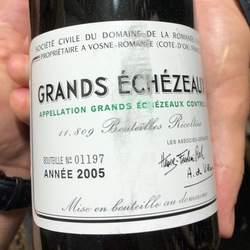Drappier
Drappier
Carte d'Or Extra Brut Champagne Blend
Very pleasant Champagne. Easy to enjoy — 2 years ago
Drappier
Carte D'Or Champagne Blend
Entry-dry, light floral aroma, strong bubbles, tastes of summer. — 3 months ago
Drappier
Drappier Champagne Réserve de l'Oenothèque 2002
Celebration in a bottle — 2 years ago
Drappier
Carte d'Or Brut Champagne Blend
Bruised Granny Smith Apple, yeasty bread, chalk — 4 months ago
Drappier
Grande Sendrée Brut Champagne 2010
More robust than an LPR. — 5 months ago
Darren liked this
Drappier
Rosé de Saignée Extra Brut Champagne Blend
Adi Jus Mai22 — 3 years ago









Guy Acheson
Very clean and fresh.
Bulle in Lyon — 3 days ago